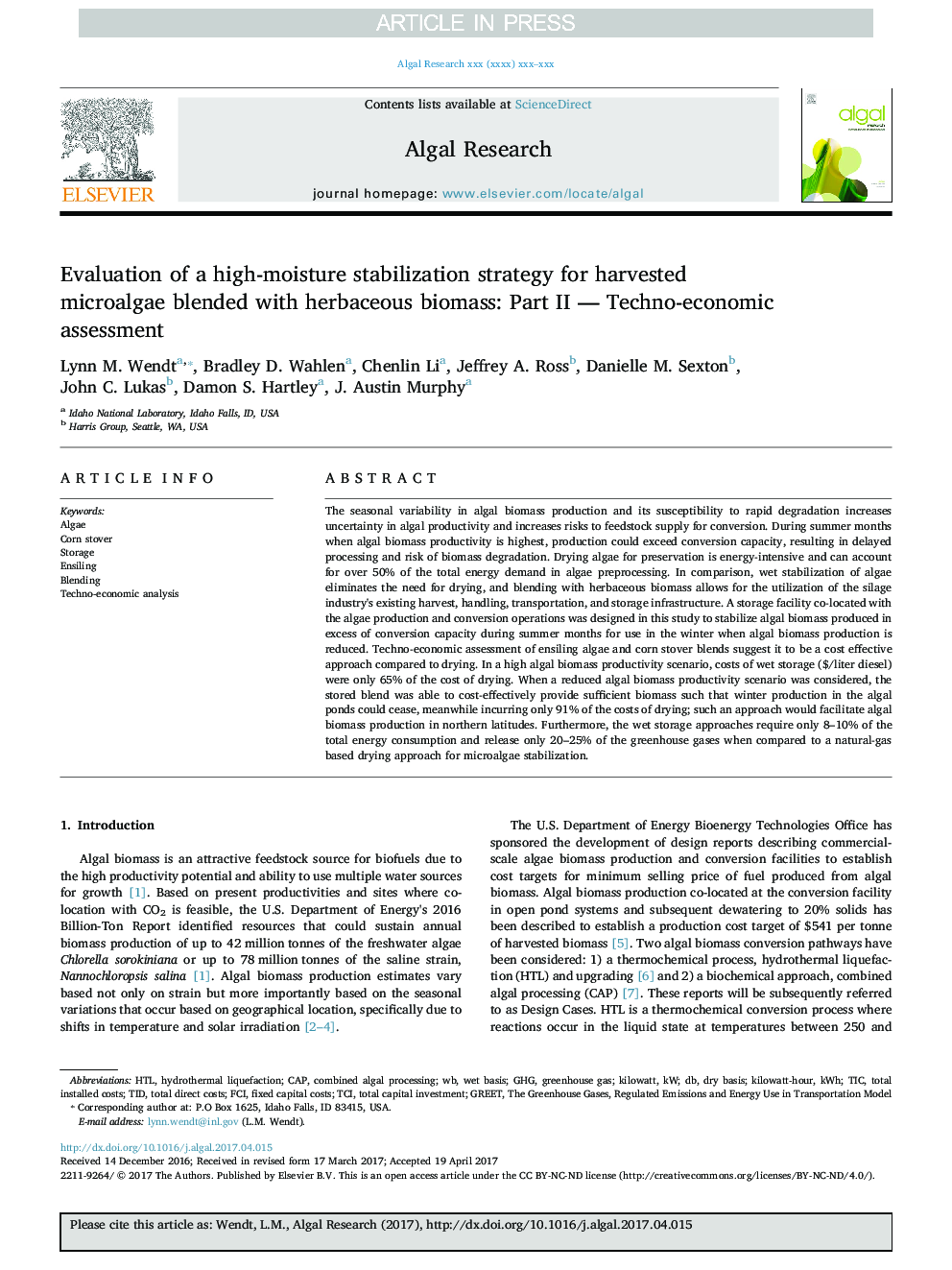| کد مقاله | کد نشریه | سال انتشار | مقاله انگلیسی | نسخه تمام متن |
|---|---|---|---|---|
| 5478409 | 1521808 | 2017 | 9 صفحه PDF | دانلود رایگان |
عنوان انگلیسی مقاله ISI
Evaluation of a high-moisture stabilization strategy for harvested microalgae blended with herbaceous biomass: Part II - Techno-economic assessment
ترجمه فارسی عنوان
ارزیابی استراتژی تثبیت با رطوبت بالا برای مزارع برداشت شده مخلوط با زیست توده گیاهان دارویی: بخش دوم - ارزیابی فنی و اقتصادی
دانلود مقاله + سفارش ترجمه
دانلود مقاله ISI انگلیسی
رایگان برای ایرانیان
کلمات کلیدی
GHGTCIFCITICHTLTechno-economic analysis - تجزیه و تحلیل تکنولوژیکی و اقتصادیAlgae - جلبک dry basis - خشک کردن پایهStorage - ذخیره سازیTID - زمانTotal capital investment - سرمایه کل سرمایه گذاریGREET - سلامEnsiling - غرق شدنHydrothermal liquefaction - مایع سازی هیدروترمالBlending - مخلوط کردنwet basis - مرطوبCorn stover - کاه ذرتCaP - کلاه لبه دارkilowatt - کیلوواتkWh - کیلووات ساعتkilowatt-hour - کیلووات ساعتGreenhouse gas - گاز گلخانه ای
موضوعات مرتبط
مهندسی و علوم پایه
مهندسی انرژی
انرژی های تجدید پذیر، توسعه پایدار و محیط زیست
چکیده انگلیسی
The seasonal variability in algal biomass production and its susceptibility to rapid degradation increases uncertainty in algal productivity and increases risks to feedstock supply for conversion. During summer months when algal biomass productivity is highest, production could exceed conversion capacity, resulting in delayed processing and risk of biomass degradation. Drying algae for preservation is energy-intensive and can account for over 50% of the total energy demand in algae preprocessing. In comparison, wet stabilization of algae eliminates the need for drying, and blending with herbaceous biomass allows for the utilization of the silage industry's existing harvest, handling, transportation, and storage infrastructure. A storage facility co-located with the algae production and conversion operations was designed in this study to stabilize algal biomass produced in excess of conversion capacity during summer months for use in the winter when algal biomass production is reduced. Techno-economic assessment of ensiling algae and corn stover blends suggest it to be a cost effective approach compared to drying. In a high algal biomass productivity scenario, costs of wet storage ($/liter diesel) were only 65% of the cost of drying. When a reduced algal biomass productivity scenario was considered, the stored blend was able to cost-effectively provide sufficient biomass such that winter production in the algal ponds could cease, meanwhile incurring only 91% of the costs of drying; such an approach would facilitate algal biomass production in northern latitudes. Furthermore, the wet storage approaches require only 8-10% of the total energy consumption and release only 20-25% of the greenhouse gases when compared to a natural-gas based drying approach for microalgae stabilization.
ناشر
Database: Elsevier - ScienceDirect (ساینس دایرکت)
Journal: Algal Research - Volume 25, July 2017, Pages 558-566
Journal: Algal Research - Volume 25, July 2017, Pages 558-566
نویسندگان
Lynn M. Wendt, Bradley D. Wahlen, Chenlin Li, Jeffrey A. Ross, Danielle M. Sexton, John C. Lukas, Damon S. Hartley, J. Austin Murphy,
